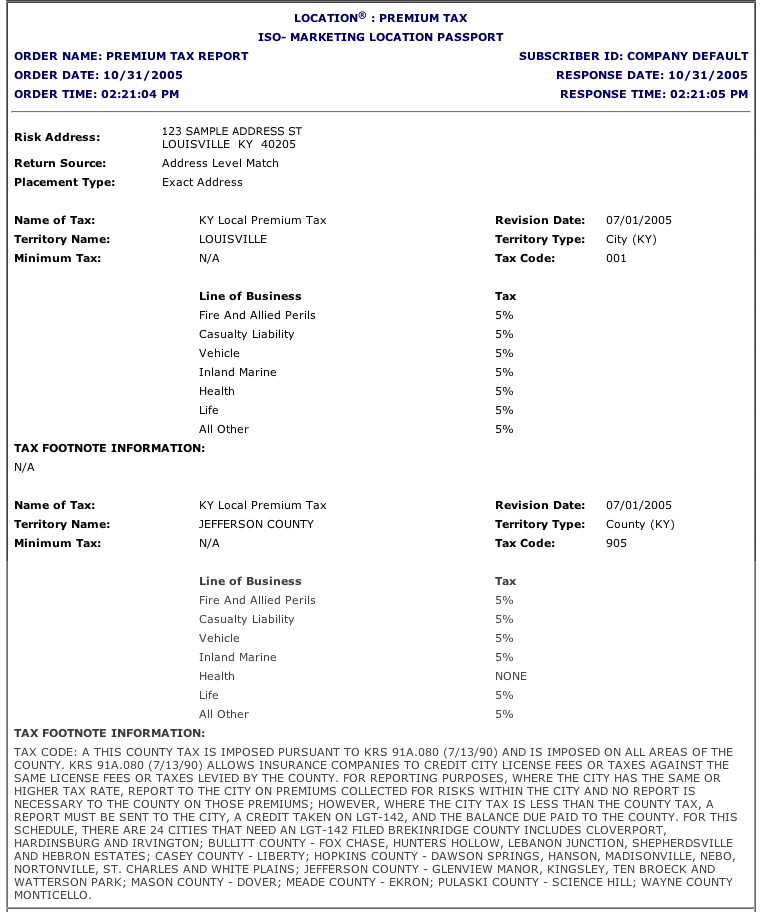
This LOCATION® report enables you to determine each policyholder's premium-tax code and related information. The service also tells you if your customers are in multiple-tax zones.
Detailed Premium Tax Service Reports are now available in Delaware, Florida, Illinois, Kentucky, Mississippi, Minnesota, New York, and South Carolina. This report is not available in an abbreviated format.

The Premium Tax Service Report provides the following information:
|
Risk Address |
The address used to match against the database. |
|
Shows whether the match is on an address level or a ZIP-Code level. |
|
|
Identifies the geocoder match-type value to which the risk address is matched. There are four placement types: Exact Address — An exact match: both the corresponding street and address range are in the street database. Street Level — A close match: the corresponding street, but not the address range, is in the street database. PCR Level — An approximate match: the corresponding street is not in the street files. The system places the address at the center of the appropriate postal carrier route (PCR). ZIP-Code Level — The corresponding street is not in the street files. The system places the address at the center of the appropriate ZIP Code. Although a Premium Tax Service Report may reflect a Return Source with an address-level match, the Placement Type may be based on ZIP Code. This means that, although the system has identified the risk address at the address level, the geocoding for the address is at the center of a ZIP Code. |
|
|
Name of Tax |
The name of the tax (for example, Kentucky Local Premium Tax) applicable to the risk address. |
|
Revision Date |
The effective date of the premium tax data. |
|
The name of the tax jurisdiction (for example, city, county, or fire district) assessing the premium tax. The system displays a message if the risk is not in a territory. |
|
|
The type of the jurisdiction (for example, city (KY)) assessing the premium tax.
|
|
|
Minimum Tax |
The dollar amount of a minimum tax, if applicable. |
|
Tax Code |
Displays the unique identifier for each tax jurisdiction as defined by the appropriate state's tax schedule. Dashes (-----) indicate that the risk is located outside of any tax jurisdiction. |
|
Line of Business Tax |
The tax applicable to a particular line of business. The values are commonly shown as percentages but may also contain dollar amounts or text expressions (for example, None). |
|
Tax Footnote Information |
Shows additional tax information applicable to the risk address. Tax footnote information applies to the tax code shown.
|
|
|
In 2006, the Florida Department of Revenue introduced a database for insurers to use to assign the appropriate premium tax for policies they write in the state. ISO has provided LOCATION Premium Tax service in Florida for many years, and we will continue to maintain and update our database quarterly. ISO’s database uses sources developed by ISO and is independent of the Florida Department of Revenue’s database. Individual insurers must decide any questions about reporting premium tax to the Florida Department of Revenue. In its role as a supplier of insurance data, ISO cannot advise you about the requirements of Florida law. ISO is not liable for any errors or penalties incurred. If you are an agent, please contact your insurer. |